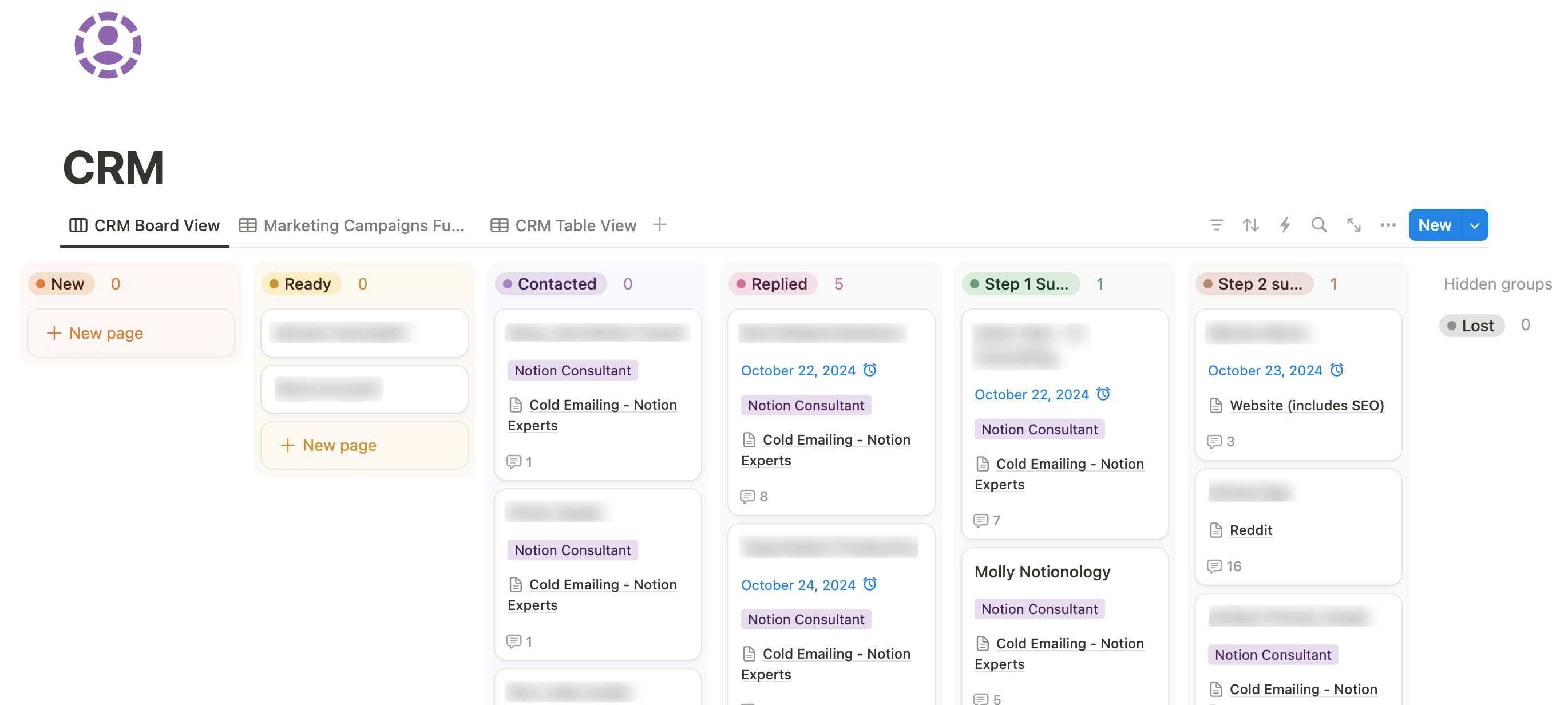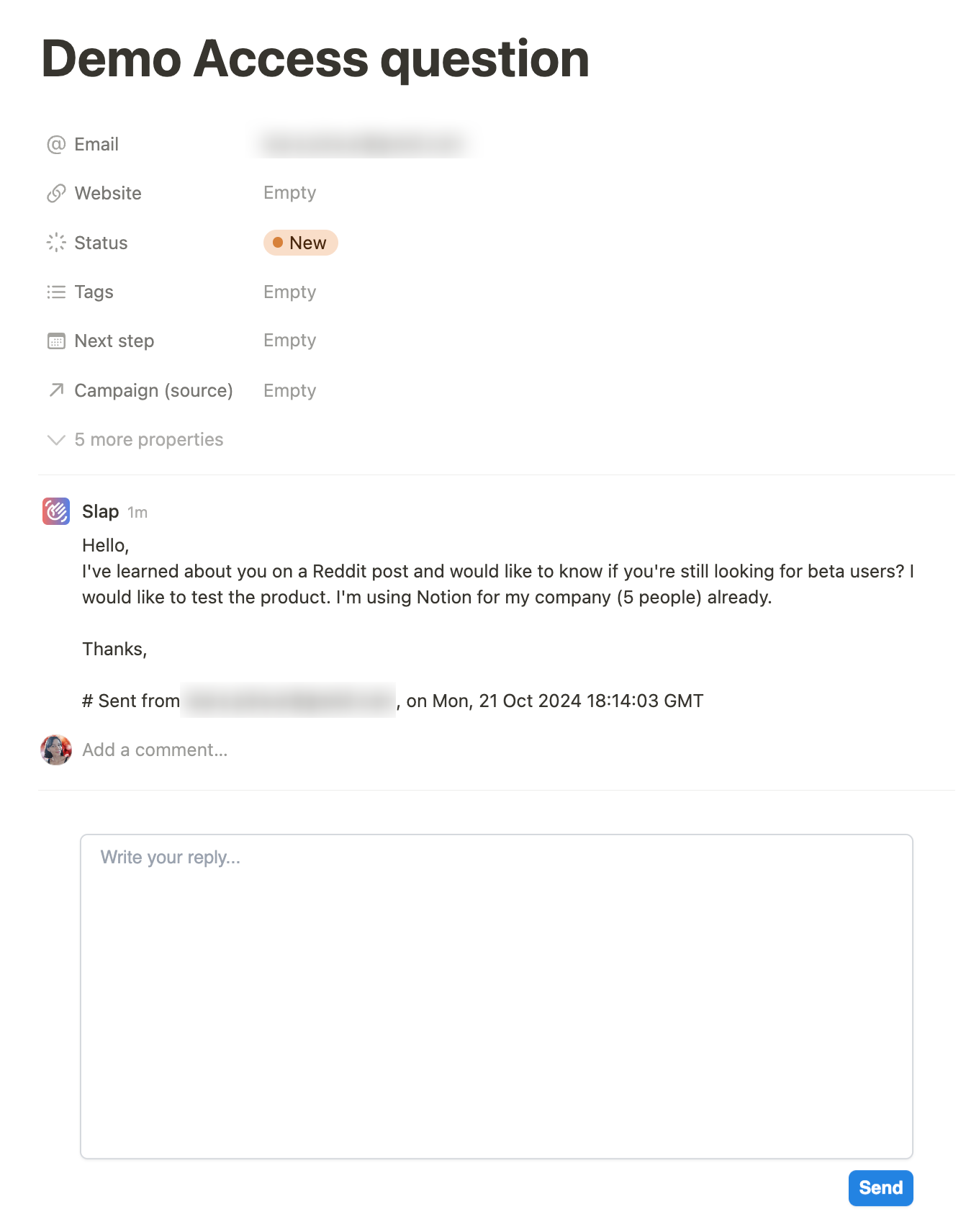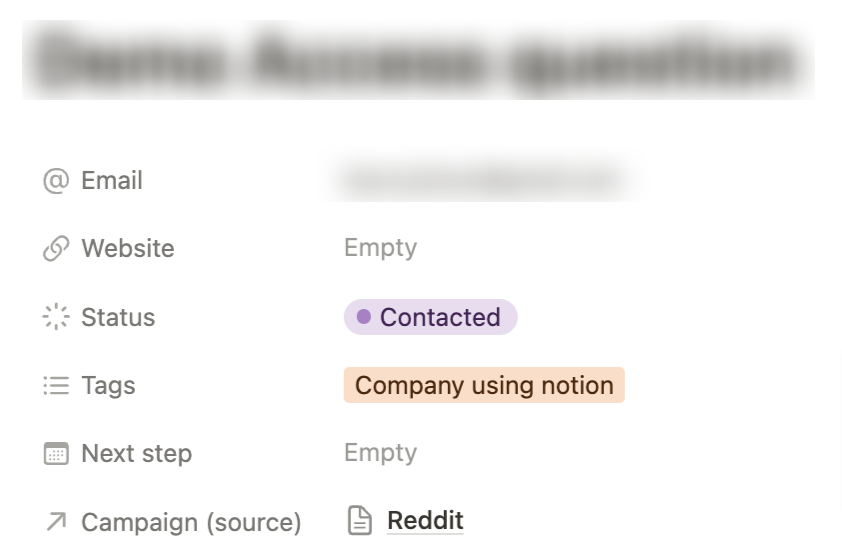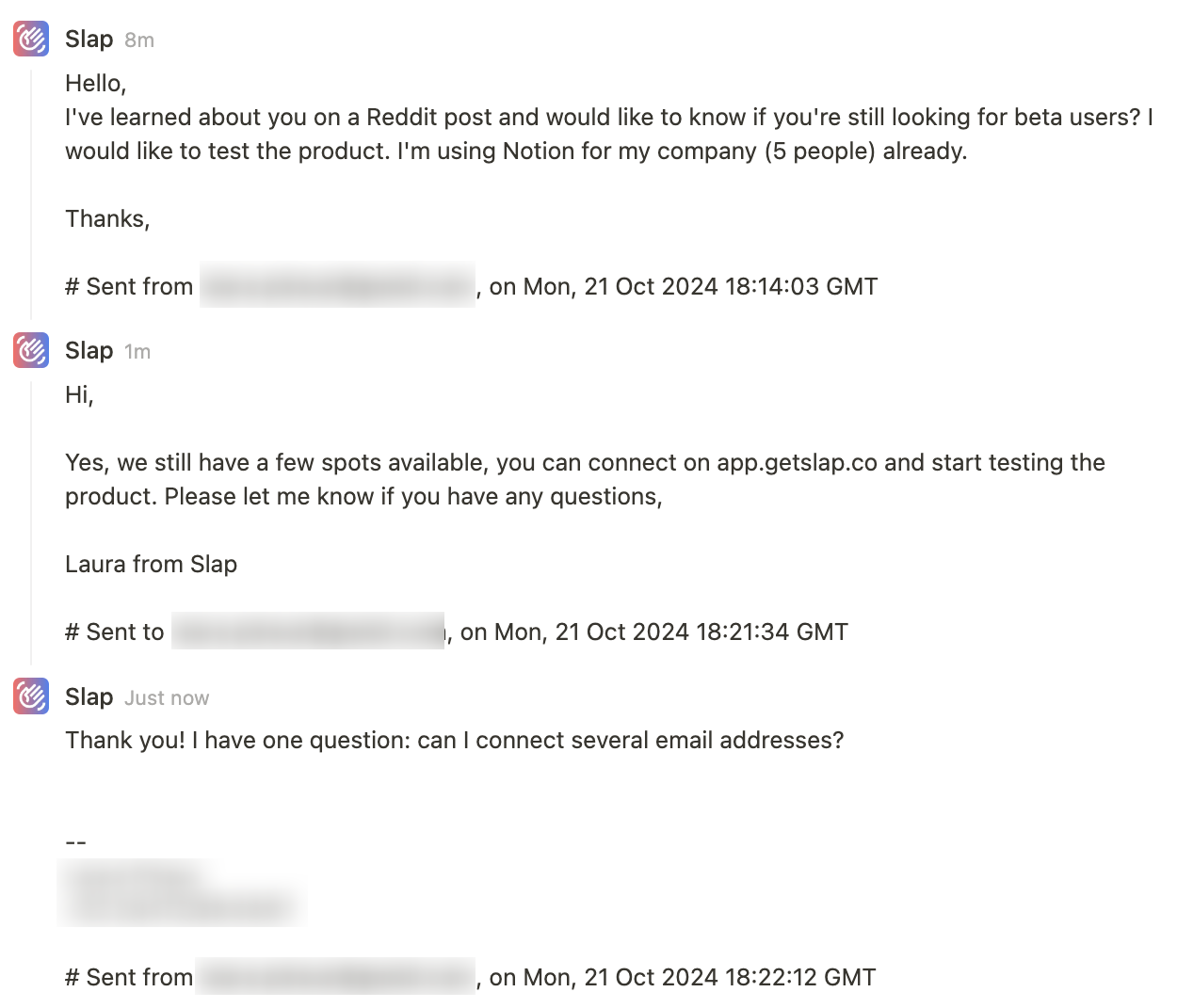How I use Notion as a CRM (with Gmail integration) and how I track my sales strategies
In this post, I’ll walk you through how I use Notion as a powerful and customizable CRM tool. By integrating my Gmail inbox with Notion, I manage leads effectively without relying on expensive and complex CRM systems like Hubspot or Salesforce. If you’re a startup or small business looking for a simple yet effective CRM solution, this approach could work for you.
I'll save the discussion of when Notion is a good choice for your CRM—compared to specialized tools like Hubspot, Pipedrive, or Salesforce—for another post.
My sales funnel setup
At the heart of my CRM is a Notion database that serves as my sales funnel, housing all my leads. In the following sections, I'll walk you through the specific properties and the view I've set up to make this database an effective tool for managing my sales process.
Database properties
My database includes several standard properties you'd typically expect for managing leads:
- Email address (type: email): Stores the lead's email address.
- Website (type: URL): Lists the lead's website, if known. It's useful for quick reference before calls, helping me understand their business and prepare more relevant, personalized information.
- Status (type: status): This is the core of my sales funnel, indicating how far along the lead is. I use it to generate statistics and understand which strategies are most effective.
- Tags (type: multi-select): I use this to categorize leads, such as "Notion Consultant" or "Notion User”.
- Next Step (type: date): This is for reminders. For example, after giving a user beta access, I set a reminder to follow up in a few days to check if they've created an account. If they haven’t, I can reach out to address any issues.
I use the title of the database item to store the lead's name instead of a separate Name property.
I also have a few more custom properties:
- Campaign (source) (type: relation): This links to a separate database containing different campaigns or go-to-market strategies. For example, a campaign might be "Cold emailing for Notion Expert Version 1." This helps track which sources generate leads and determine the effectiveness of each strategy.
- Thread ID (type: text): A hidden technical field necessary for connecting with my mailbox.
- Meeting Notes (type: relation): Links each lead to their related meeting notes (typically from demo calls) stored in a separate database. I hide the property when it’s empty.

Database view
I use a Board view with Status as the column, which gives me a clear, visual representation of where leads are in the sales process. This helps me prioritize follow-ups and keep the sales pipeline moving efficiently. In this view, I display properties like Campaign, Tags, and Next Step (reminder date), which turns red when it’s due.

How leads progress through my sales funnel
Let me walk you through how a lead enters and moves through our funnel. We have two types of leads: those who come to us (inbound) and those I reach out to directly (outbound). I'll describe the process for both scenarios and explain how my Gmail integration (powered by Slap) plays a crucial role.
Inbound (when a lead contacts me)
Thanks to Gmail integration powered by Slap, when I receive an email at hello@getslap.co, a new item is automatically created in my Notion database. The email’s content appears in the comments section.

I then fill in the database properties based on the information available, tagging the lead with the appropriate source (e.g., Reddit) for example.

I can respond directly from Notion or from my mailbox.

My replies will also show up in the comments. The conversation continues this way, with all interactions recorded in the comments as long as we're in the same email thread.

Eventually, as interactions continue, the lead moves through different stages of the funnel.
Outbound (when I contact a lead)
For outbound leads, the process begins in my mailbox. I use predefined Gmail templates but always personalize the message for each potential contact. Once the email is sent, it automatically appears in Notion, where the email thread is synced.
I then enrich the database entry with details like the lead's name and website (usually open in my browser from customizing the email). I add relevant tags and assign a campaign (e.g., "Cold emailing for Notion Experts Version 1"). The email address is automatically populated.
From this point, the process mirrors the inbound lead flow described above.
Analytics
This is my favorite part of the CRM. By tracking the effectiveness of different strategies, I can optimize my marketing and sales efforts.
Remember the "Campaign (source)" property in my leads database? It’s a relation to another database where I track different campaigns. In the Campaign database, I’ve added properties with formulas to help calculate conversion rates, total leads generated, and more.

I keep this campaign data view next to my CRM board in Notion. This setup allows me to instantly see which campaigns are performing well and which might need adjustment.

The Good and the Not-So-Good
This process offers several advantages:
- Collaborative Feedback: If I need help replying to an email, I can use the comment feature to ping a teammate for their opinion—no need to copy/paste or forward the email.
- Efficient Demo Prep: Before demo calls, I can easily review all prior conversations with the lead, making sure I’m well-prepared.
- Organized Leads: Seeing all my leads well-organized in Notion, instead of lost in a crowded mailbox, helps me feel in control and reduces the stress of missed follow-ups.
However, there are a few downsides:
- Manual Work: The process is still somewhat manual. It’s perfectly manageable with a reasonable email volume, but it could become more time-consuming if scaled up.
- Multiple Email Threads: If you have multiple email threads for the same lead, you’ll need to tweak this process by creating a database for email threads and another for contacts/leads, with a relationship between the two. I’ll address this in a future blog post.
Summary
This process might not fit every company—it depends on team size and lead volume—but for startups or small businesses, it’s a good way to handle leads without feeling overwhelmed. It provides a sense of control and a clear way to track which sales strategies work, all without breaking the bank. Notion’s flexibility allows for easy customization, and it’s reassuring to know that all emails are still accessible in your mailbox.
If you’re looking to streamline your lead management process, give Slap a try to experience seamless Gmail and Notion integration. Contact me at laura@getslap.co to share your feedback or ask your questions.
Thanks for reading!